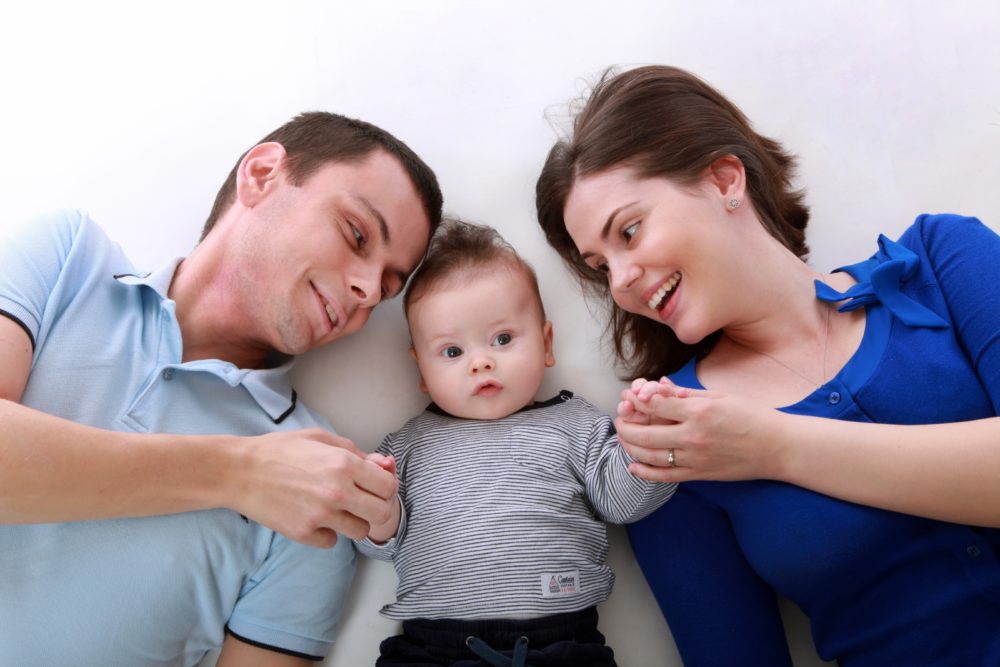Achondroplasia is a kind of dwarfism in which the limbs are shortened. A big head compared to the body, a prominent forehead, and greater space between the middle and ring fingers are all possible indications in newborns.
Achondroplasia is the most prevalent cause of low height, affecting one out of every 10,000–30,000 children. Because of the way achondroplasia is passed down through the genes, about 75–80 percent of people with the condition are born to parents of typical stature.
This page explains what achondroplasia is, the signs and symptoms it causes in newborns, and how quickly doctors may detect it in a kid.
What is achondroplasia?

Achondroplasia is a genetic disorder that inhibits bone growth. The term “achondroplasia” literally means “without cartilage formation.”
Cartilage is a stiff, flexible tissue that makes up most of the skeleton throughout development. The body can generate cartilage in people with achondroplasia, but it has a hard time converting it to bone. This causes growth disparities, particularly in the limbs.
The ailment causes everyone to be small in stature. Adults with achondroplasia are typically 4 feet 1 inch (124 centimeters) tall for females and 4 feet 4 inches (131 centimeters) tall for males.
Achondroplasia is not a condition that may be treated or cured. Many individuals with the condition live happy and healthy lives.
Causes
Achondroplasia is caused by mutations in the FGFR3 gene. This gene is in charge of directing the production of a protein that aids in the formation and maintenance of bone and brain tissue. Almost all occurrences of achondroplasia are caused by two particular changes in the FGFR3 gene.
Researchers believe that these abnormalities in the gene enable the FGFR3 protein to become overactive, affecting skeletal development and leading to the achondroplasia-related alterations in bone growth.
Achondroplasia can be passed down through the generations as an autosomal dominant characteristic. This means that if a kid receives the disease-causing gene from one parent, the child will be born with it.
If one of the parents has achondroplasia, the infant has a 50% chance of inheriting it. A child has a 50% chance of acquiring achondroplasia if both parents have it. They do, however, have a 25% risk of inheriting a gene mutation that leads to homozygous achondroplasia, which is a lethal form of the disease. In most situations, a particular gene that has mutated spontaneously is passed down from two parents who do not have achondroplasia.
Symptoms and signs
Achondroplasia is characterized by short arms and legs, particularly short upper arms and thighs, and an average-sized trunk. In a young baby, however, these indications may be more difficult to detect.
Other indications and symptoms to look out for include:
- a curved spine
- decreased muscle tone
- a head that is disproportionally large compared to the body
- a prominent forehead
- limited range of motion at the elbows
- increased space between the middle and ring fingers
- shorter fingers
- bowed legs
How soon can you tell if a baby has achondroplasia?
If a doctor notices shorter bones on an ultrasound scan during pregnancy, they may diagnose achondroplasia. They can utilize ultrasound to see whether there is too much amniotic fluid surrounding the baby, which could suggest achondroplasia.
Achondroplasia can also be diagnosed shortly after delivery by a doctor. They could search for:
- increased front-to-back head size
- signs of hydrocephalus, which refers to excess fluid on the brain
- shortened long bones in the arms and legs, particularly on X-rays
Genetic testing can be used by doctors to confirm a diagnosis, although it is not always necessary.
Is achondroplasia harmful to one’s health?
Certain health issues can be exacerbated by achondroplasia. Doctors can treat, control, or decrease the effect of problems with the right medical treatment and assistance.
A person with achondroplasia may be more prone to the following conditions:
- Recurring ear infections: A person with tiny ear passageways is more prone to have ear infections often.
- Curved spine: A curved spine is occasionally seen in people with achondroplasia. This may not usually result in health issues, but it can alter a person’s posture. It may cause pain or put strain on internal organs on rare occasions.
- Apnea: Apnea is a condition in which breathing stops for a short period of time before restarting. It can lead to other symptoms and increase the chance of developing other illnesses over time.
- Spinal stenosis: The spinal column narrows as a result of this potentially serious condition, putting pressure on the spinal cord. Numbness, tingling, discomfort, and trouble walking are all symptoms of spinal stenosis.
- Hydrocephalus: This is a less common yet possibly dangerous consequence. Hydrocephalus is a condition in which fluid accumulates on the brain, causing an increase in head size and perhaps damaging the brain itself.
Providing assistance to children with achondroplasia
Children with achondroplasia frequently grow up to be healthy, self-sufficient adults. Others’ perceptions of the disease, on the other hand, can be damaging. It’s a result of ableism.
As children get older, it is critical for parents and caregivers to be champions for their children’s health and happiness. This might entail:
Encouraging self-esteem and independence
Self-esteem and self-assurance are crucial parts of a child’s growth. Caregivers may assist a kid with achondroplasia develop self-esteem by doing the following:
- treating them according to their age and level of development, not their size
- treating achondroplasia as a difference, not a problem
- asking the child how they would like to refer to themselves (e.g., a person of short stature, little person, or similar)
- enabling the child to do things themselves, instead of doing things for them
- adapting family activities so they can join in
- asking family and friends to adopt these approaches too
Little People of America and Understanding Dwarfism both include information on dwarfism that people may read or share with others.
Looking after spine health
Children with achondroplasia may acquire spine curvatures such as kyphosis or lordosis as they grow. Parents and caregivers can lessen the likelihood of this happening by:
- positioning the baby with a straight back and head when feeding, with support from a firm pillow or feeding seat
- avoiding unsupported sitting devices that cause curved sitting during the first year of life
- seeking pediatric orthopedic care if the spine begins to curve
Promoting nutrition and exercise
A healthy diet and regular exercise may benefit anyone’s bones and joints, but it’s especially crucial for people with achondroplasia. It can also help to prevent obesity, sleep apnea, and other health problems.
When should you consult a doctor?
Anyone who suspects their kid has achondroplasia should get a diagnosis from a doctor. Knowing that a kid has the illness might help parents and caregivers adjust their parenting style and prepare for future issues. It also implies that physicians will be aware of any possible issues.
It’s also crucial for children with achondroplasia to attend routine visits to track their growth and development.
Conclusion
The most prevalent cause of dwarfism is achondroplasia. Achondroplasia is caused by mutations in the FGFR3 gene, which controls how the body makes bone. Even if a person does not have achondroplasia, they can pass on the gene.
Shorter limbs, a bigger head than normal, and space between the middle and ring fingers are all indications of achondroplasia in babies. A physical examination and medical imaging can help a doctor make a diagnosis. They may conduct tests to discover the genetic mutation in some cases.
Although achondroplasia does not require treatment, some people may require assistance in order to live full and healthy lives. Because each kid is unique, it’s critical to tailor this assistance to their preferences and requirements while still encouraging independence.
Sources
- https://medlineplus.gov/genetics/condition/achondroplasia/#resources
- https://www.medicalnewstoday.com/articles/achondroplasia-in-babies
- https://www.genome.gov/Genetic-Disorders/Achondroplasia
- https://kidshealth.org/en/parents/dwarfism.html
- https://pediatrics.aappublications.org/content/145/6/e20201010
- https://pedsinreview.aappublications.org/content/40/6/316
- https://www.aappublications.org/news/2020/05/26/achondroplasia052620







